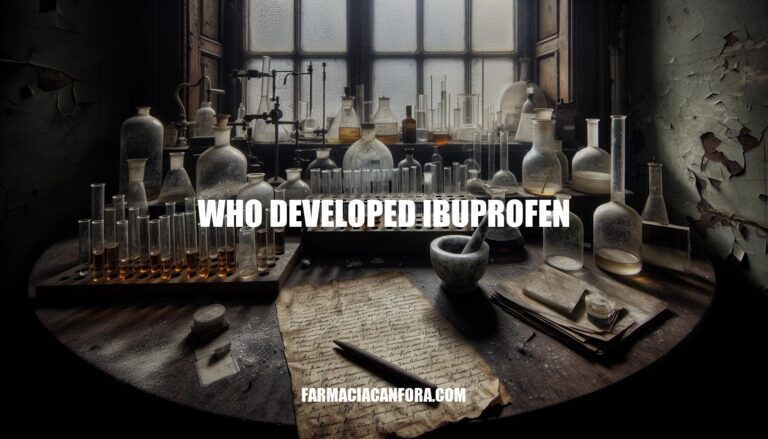


Ibuprofen, a widely used pain reliever, was developed by Stewart Adams and John Nicholson in the 1960s. Working at Boots Pure Drug Company in England, Adams, a pharmacologist, and Nicholson, a chemist, collaborated to create this groundbreaking nonsteroidal anti-inflammatory drug (NSAID).
Ibuprofen was developed by Stewart Adams and John Nicholson at the Boots Pure Drug Company in the UK during the 1950s. Their primary motivation was to find a safer alternative to aspirin for treating rheumatoid arthritis. Aspirin, while effective, had significant gastrointestinal side effects, and other available treatments like phenylbutazone and corticosteroids had serious adverse effects. Adams and Nicholson aimed to create a “super aspirin” that retained the anti-inflammatory benefits without these drawbacks.
Their research involved screening over 600 compounds before identifying 2-(4-isobutylphenyl) propionic acid, later named ibuprofen.
The development of ibuprofen involved several key steps:
This process highlights the rigorous research, testing, and regulatory steps involved in bringing a new drug to market.
Here are the key figures who developed ibuprofen and their contributions:
These individuals collaborated to create one of the world’s most widely used nonsteroidal anti-inflammatory drugs (NSAIDs).
The development of ibuprofen faced several significant challenges:
Initial Uncertainty: The team, led by Dr. Stewart Adams, started with a “blank piece of paper” and no clear direction on how to treat rheumatoid arthritis. This lack of initial guidance made the research process daunting.
Testing Numerous Compounds: Over a decade, the team tested more than 600 chemical compounds. This extensive trial and error process was time-consuming and often led to dead ends.
Side Effects and Tolerability: Finding a compound that was both effective and well-tolerated was crucial. Many compounds either failed to provide the desired anti-inflammatory effects or caused unacceptable side effects.
Personal Setbacks: Dr. Adams himself faced personal and professional setbacks. Despite these, his determination and persistence were key to overcoming the obstacles.
Validation and Acceptance: Even after discovering ibuprofen, proving its efficacy and safety to the scientific community and regulatory bodies was another hurdle.
These challenges highlight the perseverance and dedication required in pharmaceutical research.
The breakthrough moment for ibuprofen came in the early 1960s when Dr. Stewart Adams, along with chemist Dr. John Nicholson and technician Colin Burrows, discovered the compound 2-(4-isobutylphenyl) propionic acid. This compound, later known as ibuprofen, was found to be effective in treating rheumatoid arthritis with fewer side effects compared to aspirin.
The approval process began with the filing of a patent in 1961, which was granted in 1962. After extensive testing, ibuprofen was approved as a prescription drug in 1969. The efforts of Adams, Nicholson, and Burrows were crucial in developing and testing over 600 compounds before finding the right one. Their dedication led to ibuprofen becoming the first drug to transition from prescription to over-the-counter status in the UK in 1983, followed by the US in 1984.
Their work has made ibuprofen a staple in medicine cabinets worldwide, used for everything from headaches to muscle soreness.
Ibuprofen, developed in the 1960s, has had a profound impact on pain management and anti-inflammatory treatment. It was created by Dr. Stewart Adams and chemist John Nicholson at Boots Pure Drug Company. Their goal was to find a safer alternative to aspirin for treating rheumatoid arthritis.
Achievements of the Developers:
Impact and Legacy:
Ibuprofen’s development marked a significant advancement in nonsteroidal anti-inflammatory drugs (NSAIDs), setting a standard for future pain relief medications.
Ibuprofen was developed by Stewart Adams, a pharmacologist, and John Nicholson, a chemist, at Boots Pure Drug Company in the UK during the 1950s.
Their primary motivation was to find a safer alternative to aspirin for treating rheumatoid arthritis. After screening over 600 compounds, they identified 2-(4-isobutylphenyl) propionic acid, later named ibuprofen.
The team’s contributions include:
Their work has made ibuprofen a staple in medicine cabinets worldwide, used for pain relief, inflammation, and fever reduction.